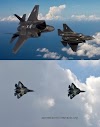The war in Ukraine may just be the beginning. According to recent U.S. intelligence assessments, Russia is undergoing a massive military transformation, with full national mobilization strategies that signal preparations for potential large-scale warfare beyond Ukraine. What was once considered a localized conflict has now evolved into a possible continental threat, with Moscow restructuring its armed forces, increasing defense production, and executing nationwide recruitment campaigns. Intelligence officials describe this shift as the most serious escalation since the Cold War.
Mobilizing a War-Ready Society
Mass Recruitment and Extended Conscription
Since mid-2023, Russia has quietly increased its military ranks—both through compulsory conscription and volunteer enlistment. The government raised the maximum draft age, expanded legal frameworks to prevent draft evasion, and implemented new digital tracking systems for draft notices. This has allowed Moscow to build up a reserve force while maintaining regular troop rotations in Ukraine. Intelligence reports estimate that Russia could mobilize up to two million troops in a short-term contingency if broader war erupted. “They are preparing society, infrastructure, and institutions for long-term war,” said one NATO intelligence officer.
Industrial-Scale Defense Production
Russia’s defense sector has been placed on wartime footing. Tank factories, missile plants, and drone workshops now operate 24/7 production schedules. New military partnerships with North Korea, Iran, and China have allowed the Kremlin to bypass Western sanctions and acquire key components. The government is also incentivizing domestic arms companies through tax breaks and nationalized investments, making Russia’s defense economy one of the fastest-growing sectors despite global sanctions.
Signs of Strategic Expansion Beyond Ukraine
Troop Movements Along NATO’s Eastern Flank
In early 2025, satellite imagery revealed large-scale military deployments in Russia’s western territories, particularly near the Kaliningrad enclave, Belarus, and the Finnish border. These movements, while not openly offensive, are interpreted by analysts as posturing for strategic leverage against NATO. “This is not just about Ukraine anymore. Russia is preparing to project power into the broader European theater,” noted a senior European defense official.
Naval Reinforcements in the Arctic and Baltic
Russia has also expanded its naval presence in the Arctic Circle and Baltic Sea, regions previously used more for deterrence than operational activity. New submarines, missile cruisers, and supply ships have been added to the fleets, creating logistical hubs that could support future regional operations. These buildups could potentially encircle NATO allies such as the Baltics, Finland, or even parts of Scandinavia if hostilities intensify.
Russia’s Strategic Objectives: More Than Ukraine
Securing Buffer Zones
Military analysts argue that Russia’s long-term objective is to redraw the map of Europe, re-establishing Soviet-style buffer zones to protect itself from NATO encroachment. This includes:
Full annexation of Eastern Ukraine
Political destabilization in Moldova and Georgia
Influence operations in the Balkans
Military leverage in Belarus and Kazakhstan
Deterring NATO and U.S. Intervention
Moscow’s aggressive buildup also sends a message to Washington and Brussels: “Stay out, or escalation will follow.” Russia has repeatedly threatened to deploy tactical nuclear weapons and recently held nuclear readiness drills in Kaliningrad and Crimea. The U.S. has responded by increasing surveillance flights, reinforcing troops in Eastern Europe, and stepping up joint exercises with Baltic and Scandinavian allies.
NATO’s Response: Readiness on High Alert
Troop Rotations and Forward Deployments
NATO has begun rotating additional units through Poland, Romania, and the Baltics. In early 2025, the alliance conducted its largest joint training exercise in decades—Operation Iron Shield—involving over 60,000 troops from 28 countries. The exercise was designed to simulate a rapid Russian thrust into Central Europe, reflecting worst-case scenarios similar to Cold War simulations.
Cyber and Space Defense Integration
With modern warfare extending beyond the battlefield, NATO has also fortified its cyber and satellite command centers. Russia’s use of cyberattacks and jamming signals in Ukraine has served as a wake-up call for how digital warfare could impact critical infrastructure across Europe.
Implications for Global Security
Potential for Escalation in Other Regions
Russia’s mobilization could trigger regional arms races and diplomatic confrontations:
Asia-Pacific: China may follow suit, emboldened by Russia’s actions
Middle East: Russian support to Iran could deepen confrontations with Israel or the Gulf states
Africa: Wagner Group-style operations may expand as part of Russian influence campaigns
Nuclear Threshold Concerns
Perhaps most alarming is the risk of nuclear escalation. With Russia’s tactical nuclear arsenal now in operational readiness and its political leadership showing signs of strategic brinksmanship, the possibility of a “limited nuclear exchange” is no longer theoretical.
Western analysts stress the need for renewed arms control dialogue—even during conflict—as the last remaining nuclear treaties between the U.S. and Russia are deteriorating.
Expert Voices: Global Leaders React
Jens Stoltenberg (NATO Secretary General):
“We are entering a more dangerous era. NATO must be prepared not just to deter, but to defend every inch of allied territory.”
Gen. Christopher Cavoli (U.S. European Command):
“Russia is building not just a war machine—but a war society. This isn’t about temporary military operations. It’s about generational confrontation.”
In conclusion, Russia’s total mobilization signals a tectonic shift in global security. What began as a regional war in Ukraine now carries the potential to ignite broader conflict, especially if Moscow sees an opportunity to exploit NATO hesitation or Western political divisions. The world stands at a critical crossroads: Will diplomacy contain this growing fire—or will miscalculation turn the 21st century into a new era of global warfare?






0 Comments